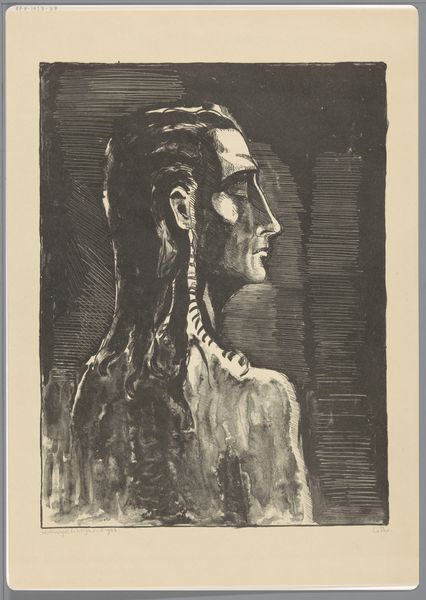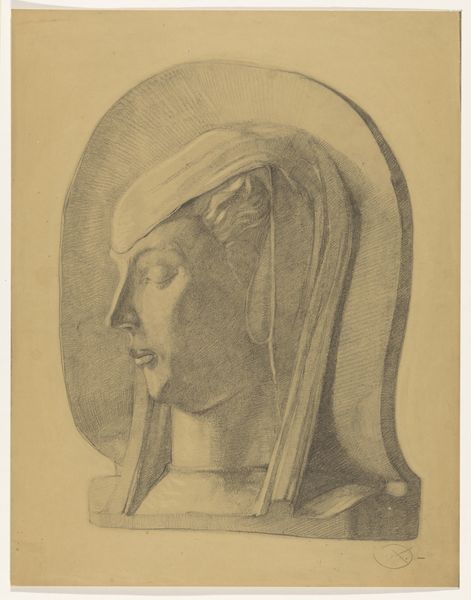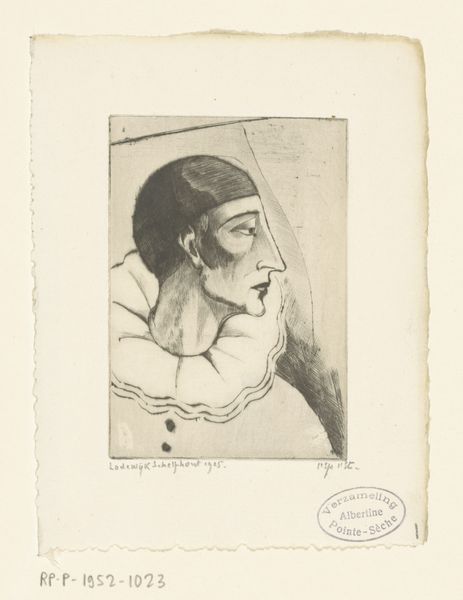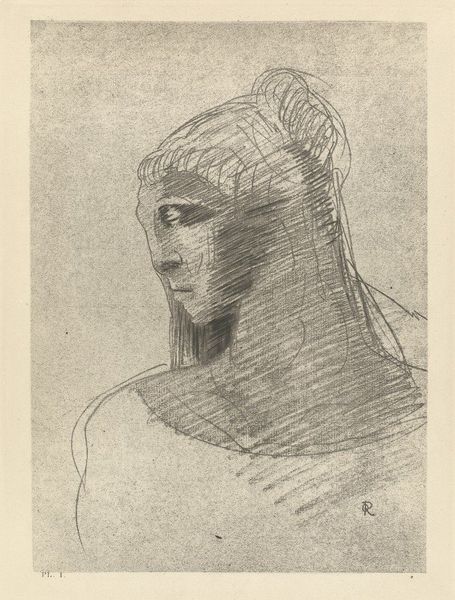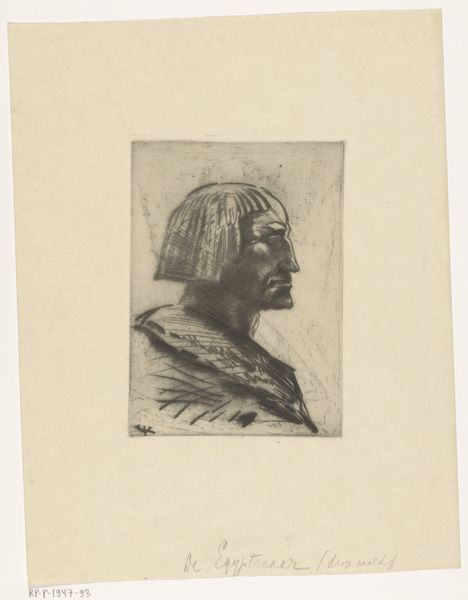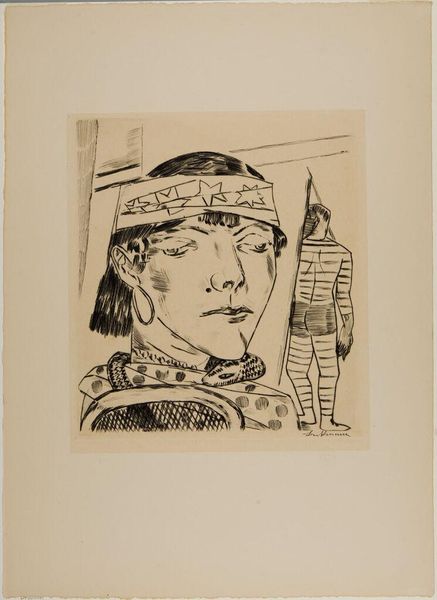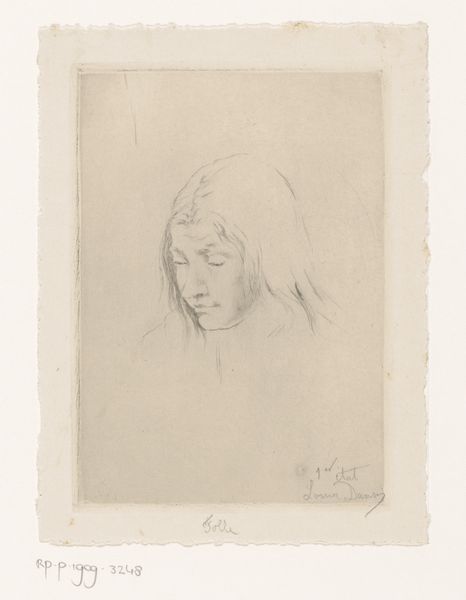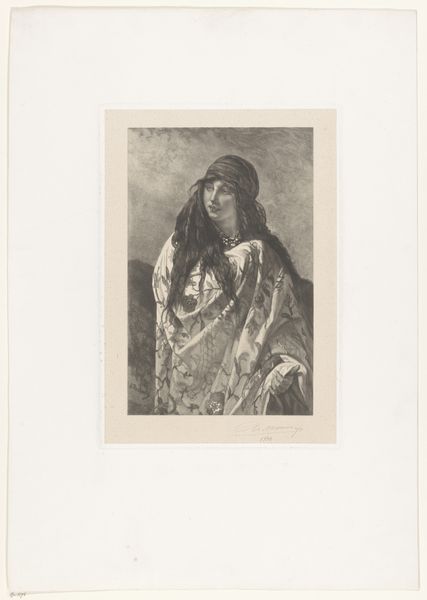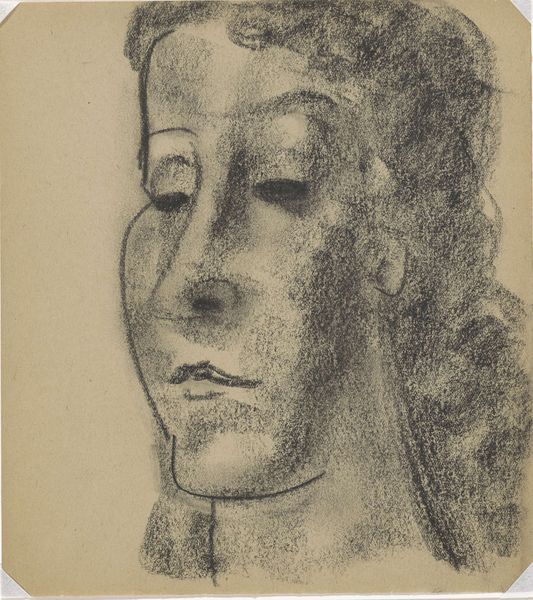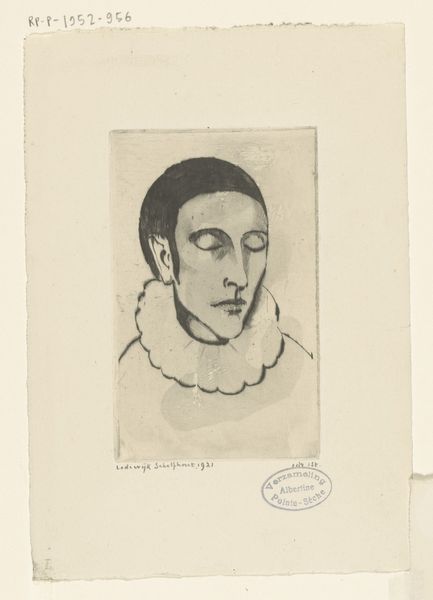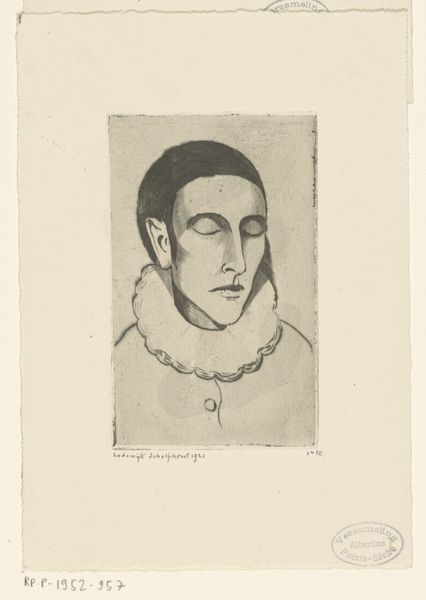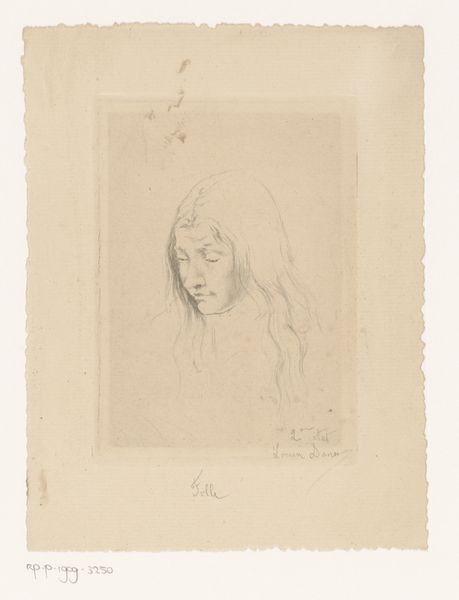
drawing, watercolor
#
portrait
#
drawing
#
charcoal drawing
#
figuration
#
watercolor
#
portrait drawing
#
portrait art
#
regionalism
#
watercolor
Dimensions: overall: 36.9 x 28.5 cm (14 1/2 x 11 1/4 in.) Original IAD Object: Head 3 times actual size. Entire bulto 17"tall
Copyright: National Gallery of Art: CC0 1.0
Curator: Standing before us is “Head of Guadalupe,” a drawing by Majel G. Claflin, created around 1938, using watercolor and charcoal. What are your initial thoughts? Editor: It's immediately striking – almost haunting. The side profile and closed eyes give it this air of serene sadness, or perhaps weary acceptance. I can almost feel the weight of history in those downcast features. Curator: Guadalupe holds a profound place in the spiritual iconography of the Americas, typically depicted in full figure, eyes open and filled with grace. What do you think Claflin does by presenting only a disembodied head in somber reflection? Editor: It flips the script, doesn’t it? By cropping the image and darkening the palette, Claflin transforms Guadalupe from an emblem of hope into something far more intimate and complex, inviting introspection rather than pious admiration. There is even some sense of sculptural form communicated via color washes which is fascinating. Curator: Claflin was associated with the Regionalism movement. Perhaps this representation reframes a globalized icon with the texture and tone of the Southwest? What are the historical precedents or other considerations that might influence a regional representation? Editor: Regionalism often championed the local and the authentic against the perceived homogenizing force of modernity. To see Guadalupe, usually presented in such a standardized form, rendered with a clear Regionalist bent underscores a claim to ownership and relevance. The artist suggests that the figure's meaning, however ubiquitous, has to be continuously rooted anew in a given place and time. I also want to say that this feels, as a piece, particularly melancholic but I couldn't put my finger on precisely why! Curator: Notice the lines, fissures almost, crisscrossing the face, how they evoke both the carving of wooden religious figures found throughout the region, and maybe even an arid, aged landscape? Perhaps that’s what is so melancholic; the sense of something simultaneously spiritual and incredibly mortal. Editor: You know, the Regionalists never shied away from portraying the gritty side of life. By stripping away the artifice, the halo so to speak, and laying bare something so worn and earthy, Claflin gives us something potent – a Guadalupe that lives and breathes with the dust and heat of New Mexico. It's the cracks that let the light in. Curator: Well said. It’s fascinating how Claflin navigates this intersection of faith, regional identity, and personal expression through a single, powerful image. Editor: Absolutely. It really gives one pause to consider what an image can truly convey.
Comments
No comments
Be the first to comment and join the conversation on the ultimate creative platform.
